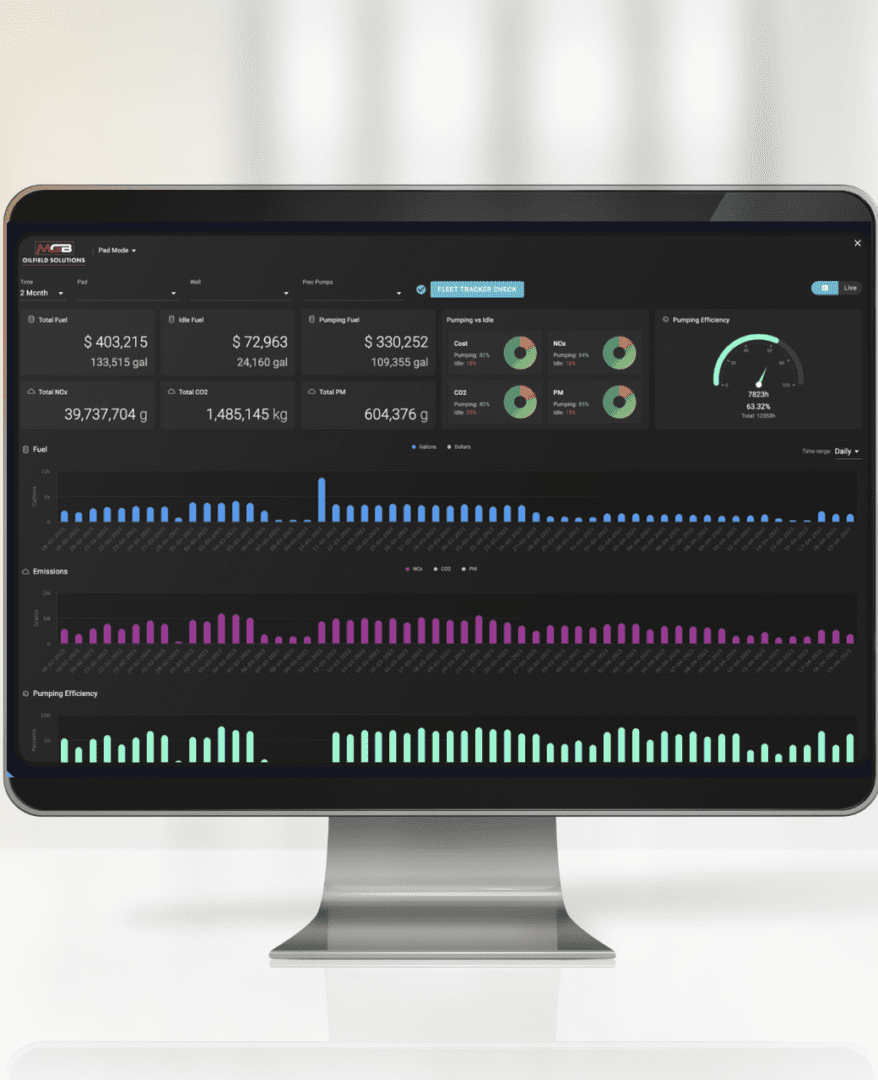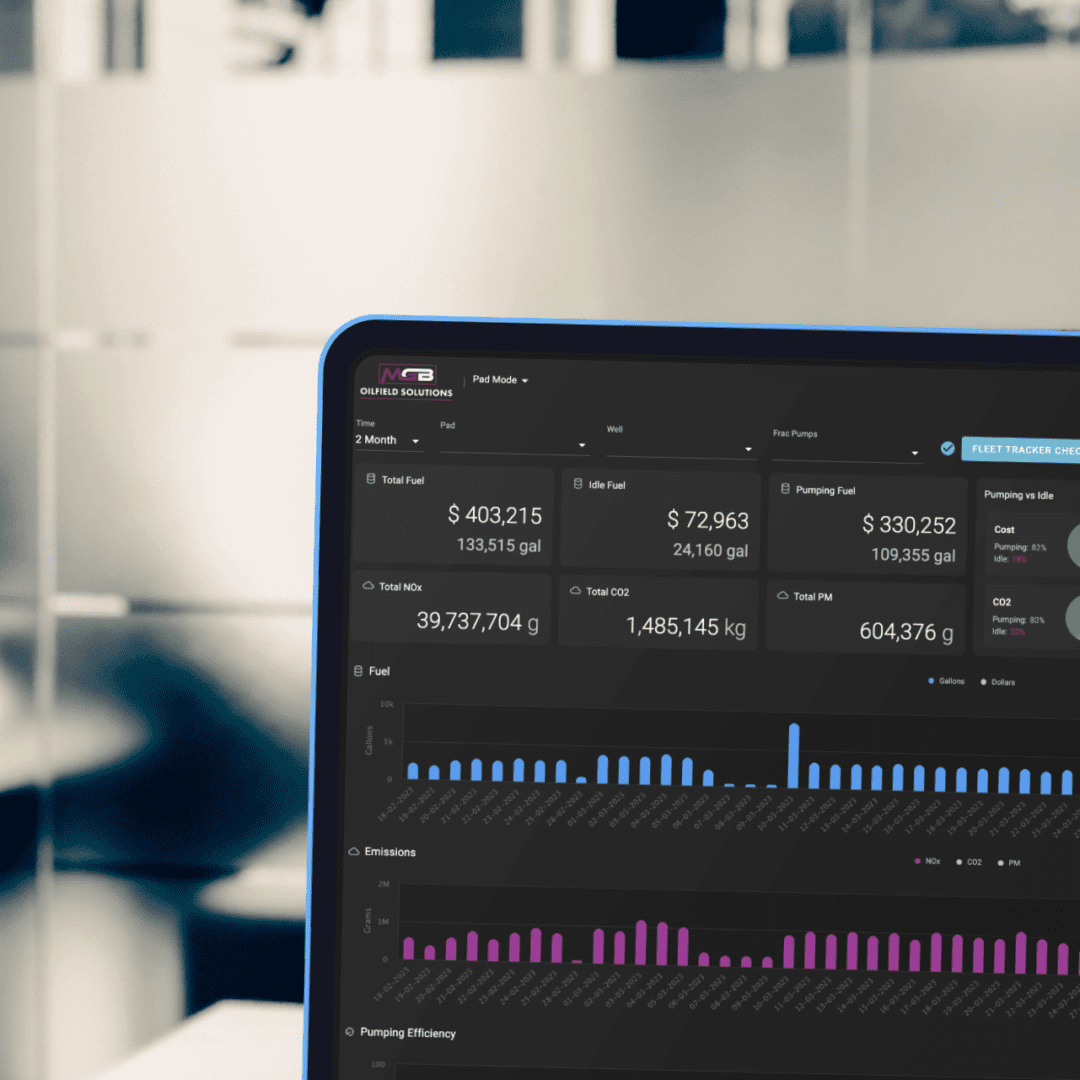Innovative technology to benchmark and optimize frac site efficiency
Tracking Emissions. Monitor and report emissions from each frac pump.
Tracking Fuel Use. Accurately measure fuel use during pumping and idle.
Real-Time Data. Provides wellsite and data centers with key information to make operational decisions.
Dual-Fuel Performance. Monitor and optimize diesel displacement at the individual asset level.
Tracking Emissions. Monitor and report emissions from each frac pump.
Tracking Fuel Use. Accurately measure fuel use during pumping and idle.
Real-Time Data. Provides wellsite and data center data for operational decisions.
Dual-Fuel Performance. Monitor and optimize diesel displacement at the individual asset level.

Real-time tracking of frac emissions and fuel use.
Benchmarking frac performance with the FuelCELL app is the first step in efficiency improvement. Establishing baseline frac emissions and fuel use enables MGB’s PowerCELL system to focus on reducing both. Although FuelCELL functions as a stand-alone app, field results have proven frac efficiency is optimized by bundling it with Corva’s Completion platform analytics.
Acquiring Real-time Frac Data
MGB’s FuelCELL monitoring system provides frac service providers and E&P companies with data to make operational decisions. Collecting data for every frac pump’s engine control module (ECM) in real-time enables FuelCELL to provide accurate fuel and emission performance. FuelCELL offers user-selected options to report ESG performance on a daily, weekly, or monthly basis.

The FuelCELL app allows detailed analysis of individual frac asset performance in terms of fuel, emissions, and gas substitution data.
A recent study in 2022 revealed that MGB technologies generated equipment and fuel savings of over $500,000 for three pads, while also reducing Carbon Dioxide emissions by 1,500 metric tons.



